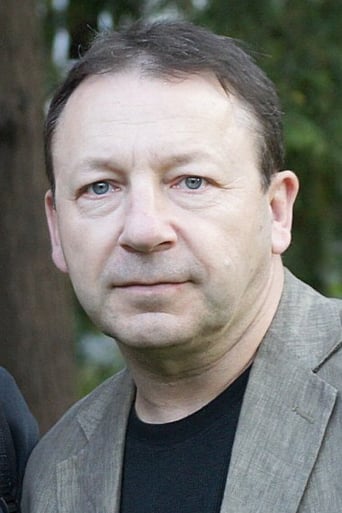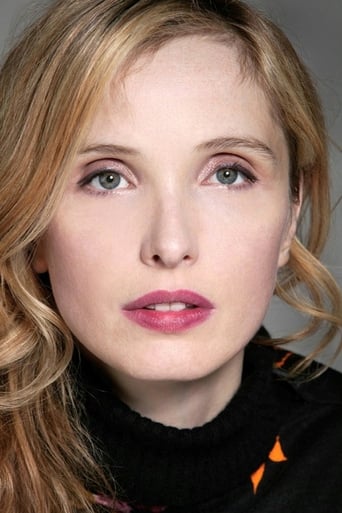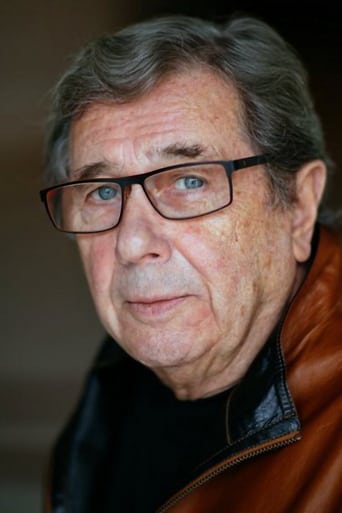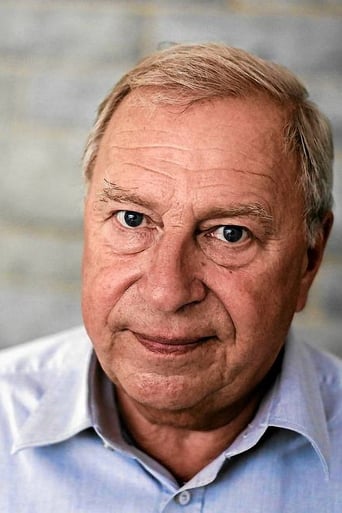Intcatinfo
A Masterpiece!
Deanna
There are moments in this movie where the great movie it could've been peek out... They're fleeting, here, but they're worth savoring, and they happen often enough to make it worth your while.
Guillelmina
The film's masterful storytelling did its job. The message was clear. No need to overdo.
Staci Frederick
Blistering performances.
Red-125
The French film Trois couleurs: Blanc was shown in the U.S. with the title Three Colors: White (1994). It was written and directed by Polish director Krzysztof Kieslowski.The movie begins in Paris, but soon after that the location switches to Poland. The film stars Zbigniew Zamachowski as Karol Karol, a hair stylist who has moved to Paris from his native Poland. Within the first five minutes, we learn that Karol has been married to Dominique (Julie Delpy), but she's divorcing him because "the marriage hasn't been consummated." Apparently, their sex life was OK before they were married, but, since the marriage, Karol has become impotent.The divorce is granted, and that's pretty much the last we see of Julie Delpy until the end of the movie. I was surprised by this, because Juliette Binoche was in almost every scene of Three Colors: Blue. However, in this film, the female lead actually has a supporting role, and a small one at that. Of course, Delpy is very beautiful, and we know from other films that she can act. But she can't do much acting if she's not on the screen. (Incidentally, in regard to Delpy's beauty, the two young men sitting next to us proclaimed that she was "scorching." I've never heard that term used to describe an actor's beauty, but I understood what they meant.)Karol ends up back in Poland, having faced numerous hardships, some of which are hard to believe. But, he had to get back to Poland somehow, and he did.The rest of the movie shows Karol using his wits to move from being a hairdresser in a very small salon to becoming a wealthy man with a chauffeur-driven Volvo.People keep telling him, "You can buy anything in Poland now." I assume this is Director Kieslowski's way of reminding us that in 1994, the Polish Republic was only five years old. There was a frenzied capitalist explosion after the Russian troops left. Karol thrives in that milieu.The movie takes some more strange twists, and ends in a strange way. (If you're interested, you can make sense of the last few moments of the film by checking the FAQ for this movie.)I believe that Three Colors: Blue is a great movie. I think Three Colors: White is a pretty good movie, but not worth a special trip to see it. It will work well on DVD.We saw this film at the excellent Dryden Theatre at George Eastman Museum in Rochester, NY. It was shown as part of the "Three Colors: Remembering Krzysztof Kieslowski" series. The movie has a high 7.7 IMDb rating, so, clearly, many people liked it more than I did. Maybe they appreciated the relationship between Karol and Dominique as symbolizing the relationship between Poland and France. Possibly I missed other symbolismIf you see Three Colors: Blue and Three Colors: Red, you'll want to see Three Colors: White for the sake of completeness. Just don't expect it to be a masterpiece.
Hitchcoc
I did not know of these films. I'm late to the party. Also, I've viewed them out of sequence. It doesn't matter. What an experience! This one is about true love. The poor Polish schmuck is being divorced by his beautiful young wife because he has been unable to consummate he marriage. We do wonder why that is, but it could well be a medical condition. He is not give a chance. As a matter of fact, she takes everything from him without a bit of compassion, leaving him sitting on a steamer trunk in a Paris street. He manages to meet his savior, a complex to man who seems to have many secrets. With his help, he manages to accumulate great wealth. I won't go into the details other than he never stops loving the woman, no matter what. Granted, his intentions are not the best, but they make for a delicate balance between freedom and revenge. Karol has lost his freedom through no fault of his own and we hang on to see how this manifests itself. The closing scene is full of hope and resolution. One of the most interesting characters in all of moviedom.
Lee Eisenberg
The second installation in Krzysztof Kieślowski's Three Colors trilogy is considered an anti-comedy. Continuing the theme of France's national motto (liberty, equality, fraternity), "Trois couleurs: Blanc" ("Three Colors: White" in English) looks at equality, as a divorced man returns to his native Poland and eventually decides to get even with his ex-wife.As in the first installment, Kieślowski uses the title color to tell the story. This color that is a combination of all the other colors appears in almost every scene. "White" continues the first movie's theme of trying to break away from the past, while there remains an object serving as a link to the past. "Blue" had the blue beads, while this one has the two-franc coin. In the end, one might interpret the man's ethically questionable business practices as a warning about going overboard in reforming Poland's economy after the Soviet-backed regime collapsed.I actually didn't find "White" to be quite as good as "Blue" (I have yet to see "Red"). The previous one focused on the woman's attempts to make a new life for herself, while this one makes the man look like the victim. Not that these turn it into a bad movie. The worst Krzysztof Kieślowski movie is better than the best Michael Bay movie. I recommend the movie. I'm now eager to see "Red".
gavin6942
Second of a trilogy of films dealing with contemporary French society shows a Polish immigrant (Zbigniew Zamachowski) who wants to get even with his former wife (Julie Delpy).Apparently, the film has a political subtext, in which Karol's impotence and financial helplessness in France, and subsequent rise as a somewhat shady capitalist, mirror the attempts of Poland to advance from its disadvantaged position within Europe. Was this intentional? Perhaps. But it is certainly one way to read the film."Three Colors: White "was met with critical acclaim by film critics, but is considered by many to be the weakest of the trilogy; it holds a 90% rating on Rotten Tomatoes, while the first and third films hold 100% ratings. 90% is nothing to get upset about.





